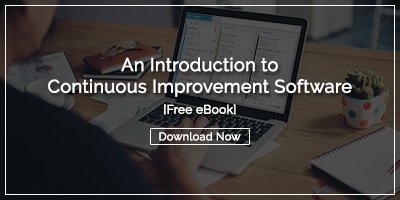 Kaizen events, also known as Rapid Improvement Events, are an effective way to tackle many difficult problems in short order. They can also help improve team cohesion and cross-functional collaboration. But like many other continuous improvement techniques, if they are not executed properly, they can cause more harm than good. We’re in the lucky position to have the opportunity to chat with people from all types of organizations about their improvement work. They’ve shared some lessons learned when it comes to Kaizen events. Here are some of the biggest mistakes.
Kaizen events, also known as Rapid Improvement Events, are an effective way to tackle many difficult problems in short order. They can also help improve team cohesion and cross-functional collaboration. But like many other continuous improvement techniques, if they are not executed properly, they can cause more harm than good. We’re in the lucky position to have the opportunity to chat with people from all types of organizations about their improvement work. They’ve shared some lessons learned when it comes to Kaizen events. Here are some of the biggest mistakes.
Ignoring Daily Improvement
Kaizen events are one tool in the improvement toolbox, but not the only one. Continuous improvement requires daily attention. Efforts shouldn’t be limited to special events. In most cases, only a few people are involved in each Kaizen event, but daily improvement should be the responsibility of every person in the organization.
Disengaged Executives
Kaizen events usually involve a small team working on a vexing problem full time for three to five days. Not only is executive approval necessary for this intense investment of resources, it is also a key ingredient for success. If the team runs into roadblocks or if the best solution requires budget approval, executive support is essential. Executives are also in the position to broadcast success and recognize people who contribute to positive change.
Lack of Team Leadership
While Kaizen teams are expected to work together collaboratively and ensure that everyone’s ideas are heard and considered, it is still necessary to have a team leader to ensure forward progress. This person is often called the facilitator. It should be someone who understands the flow of Kaizen events and has the leadership skills to keep the team on track. It might be someone who is involved in the process to be improved, or it may be someone from outside the department or even a professional Kaizen consultant.
Trying to Fit a Square Peg into a Round Hole
Kaizen events can work wonders, but they are not the right choice for every type of problem. They typically last between three and five days, so they are not the best option for extremely complex problems. There are plenty of other Kaizen tools that make more sense for issues that can’t be addressed in a relatively short period of time. Trying to take on the wrong problems simply frustrates the team and will eventually lead to disengagement with Kaizen.
An Unclear Charter
It is essential to define exactly what will be addressed in a Kaizen event - and often equally important to detail what will not be considered part of the scope. It is easy to get sidetracked or pulled in an unexpected direction as the event unfolds. A clear, documented charter will help the team stay focused. If additional opportunities for improvement are uncovered, they should be captured for future projects.
Lack of Training
Everyone on the team should have a good understanding of how Kaizen events work and what is expected of them during their time on the project. It helps if team members are aware of the Kaizen philosophy and are familiar with any tools, such as the 5 whys, DMAIC, or value stream mapping that will be used during the event.
Inadequate Support Tools
Without the right technology in place, teams can get bogged down in emails and spreadsheets. These tools are not designed to support Kaizen work and can become a major distraction. Kaizen software, on the other hand, helps teams collaborate seamlessly and effectively. It gives leaders insight into the progress of the event and creates a repository of information that can be used to make the next event even more effective.
No Clear Vision of Success
Before the event, it is important to define what success looks like. Which key business metrics should be better as a result of the work? How will they be measured and what are the benchmarks for improvement? In addition to calculating the impact of the event immediately after, you’ll want a plan for monitoring the results over the long-term. This will help justify the investment in this event and those you plan to do in the future.
I feel like I say this a lot, but most of the improvement techniques we discuss are quite simple. Kaizen events are no exception, but they can easily be derailed without care and planning. Execution is everything when it comes to improvement, so avoid these common mistakes and make your next Kaizen event a resounding success.



Add a Comment